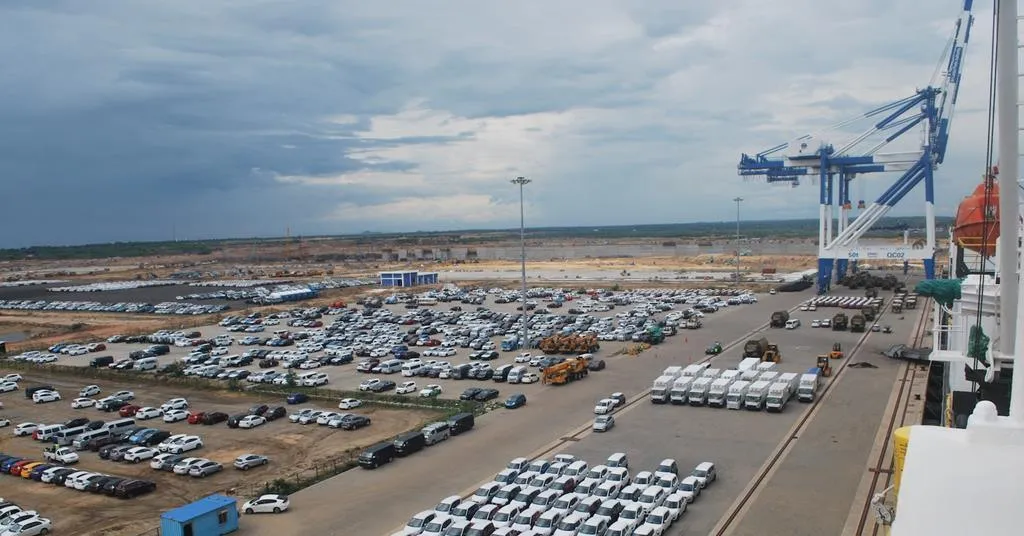Executive summary
Sri Lanka lifted the five-year vehicle imports suspension in February 2025. Imports are open under phased controls, tighter age and valuation rules, and compulsory LCs. A public Vehicle Verification Portal is live. Import spend in 2025 has risen sharply, led by personal vehicles. Policy signals point to continuity, but FX risk and enforcement remain watch points. Buyers should verify chassis data, confirm age eligibility, open LCs before shipment, and meet post-clearance deadlines.
What changed in 2025
- Ban lifted for private vehicles from 1 Feb 2025.
- Phased reopening to manage volumes and FX.
- Operational deadlines introduced for post-clearance registration and sale.
- Customs strengthened valuation floors for selected HS codes to curb under-invoicing.
- A chassis-based verification portal was launched to protect consumers and improve compliance.
Historical context: 2020–2025
The suspension that began in 2020 reshaped the market. Pent-up demand accumulated as households postponed purchases, fleets aged, and parts and maintenance costs rose. Used vehicle prices climbed well above pre-2020 norms, while grey-market risks increased due to scarcity. Finance shifted toward longer tenors with higher effective costs. Dealers responded by focusing on reconditioning, aftersales, and spares rather than volumes. The 2025 reopening is therefore not a normal cycle turn; it is a structural reset after five years of distortion, with stakeholders relearning pricing, logistics, and compliance in a rules-heavy environment.
Current rules at a glance
- Letter of Credit must be opened before shipment.
- Age limits apply to used vehicles and vary by category (cars, vans, dual-purpose, commercial).
- Valuation floors for used units to prevent under-invoicing.
- Document set: commercial invoice, bill of lading, LC, export certificate (used units), and any required pre-shipment checks.
- Time-bound obligations after Customs declaration to complete registration or sale.
- Buyer protection: Vehicle Verification Portal to confirm legality and duty payment via chassis number.
Market impact so far
Import spend has rebounded. Demand is strongest in the small-car, hybrid, and light commercial segments. Dealers are rebuilding inventories as logistics normalise, but delivery timelines remain uneven due to shipping schedules, model availability, and bank processing times. Financing costs and duty structures keep retail prices elevated even with reopened channels. Consumers are more cautious and comparison-driven, using online listings and verification tools before committing. Corporate buyers are prioritising total cost of ownership, fuel economy, and predictable service intervals.
Segment view: where demand is concentrating
- Compact cars and hatchbacks: Lead volumes due to lower duty exposure, easier financing, and urban usability. Expect quick turnover on popular nameplates with proven reliability and parts access.
- Hybrids: Attractive for mixed city–highway use. Buyers weigh fuel savings against battery lifecycle and replacement costs; vehicles with transparent service histories and warranty coverage clear faster.
- EVs: Interest is rising, but grid reliability, home charging readiness, and resale value considerations slow conversion. Fleet pilots focus on predefined routes and depot charging.
- Vans and dual-purpose: SMEs and logistics operators prioritise payload, durability, and uptime. Age limits and valuation rules influence specification choices toward newer, cleaner units.
- Commercial trucks and buses: Procurement aligns with infrastructure, tourism, and last-mile growth. Financing structure, aftersales guarantees, and parts availability are decisive.
- Motorcycles and three-wheelers: Sensitive to licensing and urban policy; demand is price-elastic and responds quickly to any tax or licence changes.
Risks and constraints
FX pressure if volumes spike or if external inflows soften. Authorities may tighten quotas, adjust duty, or sequence shipments.
- Compliance load: Age caps, valuation rules, and documentation add cost and time. Errors can trigger penalties or release delays.
- Policy sensitivity: Macro conditions can prompt rapid tweaks; stakeholders must monitor notices closely.
- Consumer exposure: Speculative pricing and non-compliant listings persist; due diligence via the verification portal is essential.
- Finance: High nominal rates and stricter underwriting keep monthly instalments elevated, limiting affordability for some segments.
Practical steps for buyers and dealers
- Run the chassis check first
Use the verification portal to confirm lawful import status and duty payment. Screenshot or save the confirmation, and match it against seller documents.
- Confirm age eligibility
Check the exact HS category and age cap before you sign. Pay attention to month and model year. Reject ambiguous or incomplete export certificates.
- Lock the LC early
Coordinate with your bank on LC issuance, shipment windows, and tolerances. Shipments made before LC establishment can face seizure or penalties.
- Budget for valuation floors
For used units, build headroom above invoice to account for Customs valuation floors and exchange rate swings. Price vehicles on landed-cost scenarios, not brochure claims.
- Meet post-clearance deadlines
Registration and sale windows start after the Customs declaration. Build a timeline with buffer for inspection, insurance, plates, and any type-approval steps.
- Audit documents
Ensure the commercial invoice, bill of lading, export certificate, and inspection reports align on VIN, engine number, trim, mileage, and options. Any mismatch is a red flag.
- Plan aftersales and spares
Confirm parts availability, service intervals, and battery warranties for hybrids and EVs. Factor scheduled maintenance into total cost of ownership.
- Compare finance offers
Seek bank quotes with identical tenors and fees. Watch for early settlement penalties and insurance bundling. A small rate gap compounded over 5-7 years is material.
- Use written offers
Negotiate with a written pro-forma invoice and time-bound validity. Tie payments to verified shipment milestones and delivery inspection.
Policy outlook: Q4 2025–H1 2026
Base case is controlled openness with incremental refinements. Expect targeted tweaks to duty and documentation to smooth FX outflows and close compliance gaps. Digital tools will expand from chassis verification toward broader risk scoring and pre-arrival processing. Upside comes from better model availability and price discovery as supply chains stabilise. Downside risks include global freight volatility, currency pressure, and any domestic revenue measures that raise effective tax. Stakeholders should build scenarios around exchange rate bands, duty adjustments, and shipping lead times, and review pricing weekly instead of monthly.
Fast facts
- Private vehicle imports reopened: 1 Feb 2025.
- Verification portal live for chassis-based checks.
- Strong demand in compact, hybrid, and light commercial segments.
- Prices shaped by duties, valuation floors, freight, finance, and pent-up demand.
FAQ
1. Are private car imports fully open now?
Yes, subject to age, valuation, LC, and deadline requirements.
2. How do I verify if a car was legally imported and taxed?
Use the Vehicle Verification Portal and check by chassis number.
3. Why are prices still high?
Duties, valuation floors, freight and insurance, financing costs, and post-ban demand.





